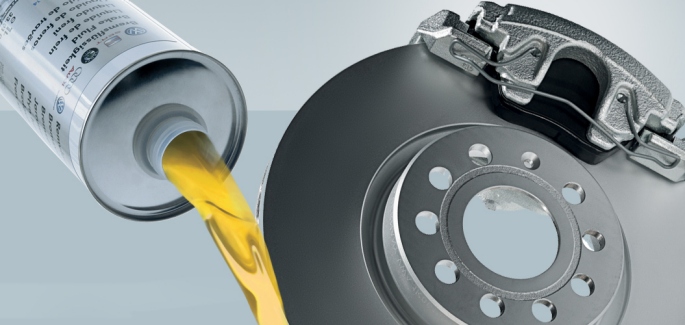Basically, available brake fluid on the market fall into three types- DOT3, DOT4 and DOT5. DOT3 and DOT4 are glycol-based, while DOT5 is silicon-based. The basic difference between DOT3 and DOT4 and DOT5 is that the former two can absorb water but DOT5 can’t.
One of the important characteristics of brake fluid is its boiling point. Hydraulic systems rely on an incompressible fluid to transmit force. Liquids are generally incompressible while gases are compressible. If the brake fluid boils (becomes a gas), it will lose most of its ability to transmit force. This may partially or completely disable the brakes. To make matters worse, the only time you are likely to boil your brake fluid is during a period of prolonged braking, such a drive down a mountain — certainly not the best time for brake failure!
DOT3, DOT4 and DOT5
-As a DOT3 or DOT4 brake fluid absorbs water, its boiling point decreases. It can absorb water from the air, which is why you should avoid opening your car’s brake fluid reservoir. For the same reason, you should always keep containers of brake fluid tightly sealed.
DOT5 fluid does not absorb water. This means the boiling point will remain relatively stable, but it also means that any water that does get into your brake system will tend to form pure water pockets, which could cause brake corrosion.
Two other important things about brake fluid: DOT3 and DOT4 eat paint, so don’t spill either of these on your car. Also, none of the different types of brake fluid should be mixed. They can react badly with each other and corrode your brake system.

Which type of brake fluid is the best?
by
